Due to the unpretentiousness of the plant, combined with beautiful flowering, the carnosa hoya has become the favorite of many gardeners. In addition, exotic succulent is an excellent air purifier, which is important when living in the city.
Material Content:
Description of varieties
The evergreen creeper, which is known as fleshy hoya, or wax ivy, has a well-developed root system and a branched stem up to 10 m long, covered with hard, pointed leaves. Flowering, in which fragrant flowers of various colors collected in umbrella inflorescences bloom, occurs in the summer.
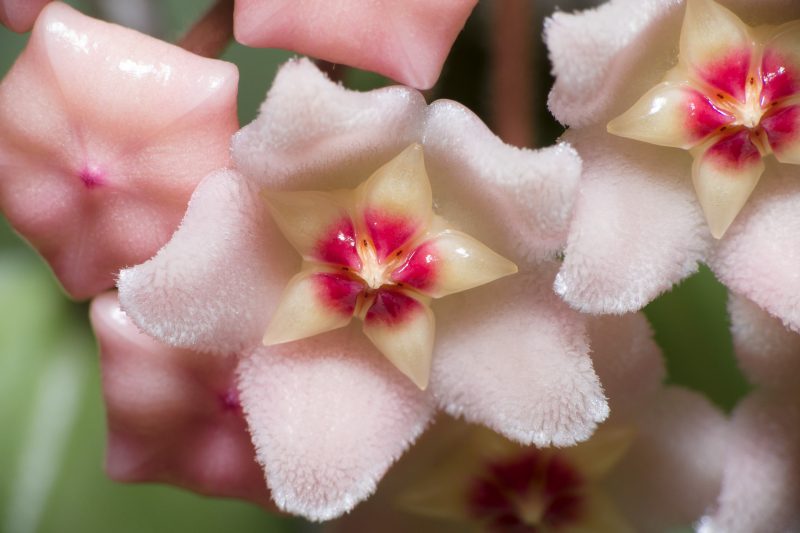
Breeders have bred many varieties of carnose hoya, which differ in shape, color of leaf plates and flowers.
Among the most common and original representatives of the type species are:
- Variegata - a form with pink flowers bordered by a white stripe;
- Exotica - a distinctive feature of the variety is the yellow color of the leaf plates, gradually acquiring a green tint to the edges;
- Tricolor - a variety with leaf blades edged with a green border that changes its primary color from red to yellow as it grows older;
- “Crimson Queen” - the variety stands out in rich pink flowers with a more delicate border around the edges.
Basic growing requirements

In order for the wax ivy to fully develop, please the eye with health and beautiful flowers with a heady aroma, it is necessary to observe the basic requirements for its cultivation at home, which are:
- bright lighting;
- high humidity;
- ensuring the appropriate temperature conditions, depending on the season;
- establishing the right irrigation system and top dressing.
Home Care
Despite the exotic nature, the indoor plant of Hoya carnosa is not capricious, so caring for it will not cause a florist hassle.
Soil Composition and Pot Selection
When choosing a pot for creeper, you need to remember that the hoya will not bloom until its roots are completely braided by an earthen lump.
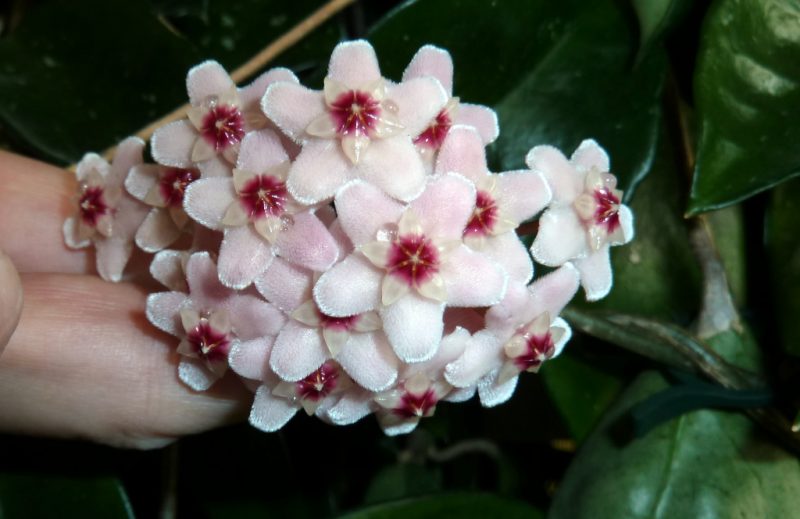
For this reason, preference should be given to small, but high pots or flowerpots, if the grower plans to grow the plant in the form of an ampel. A properly selected container is filled with loose, nutritious soil, which can be composed independently of sheet, soddy soil, humus, sand in a ratio of 3: 2: 2: 1. It should be calcined in the oven to destroy the infection and insect larvae. Also, the substrate can be purchased in the store, stopping the choice of soil mixture for palm trees.
Features of the content depending on the season
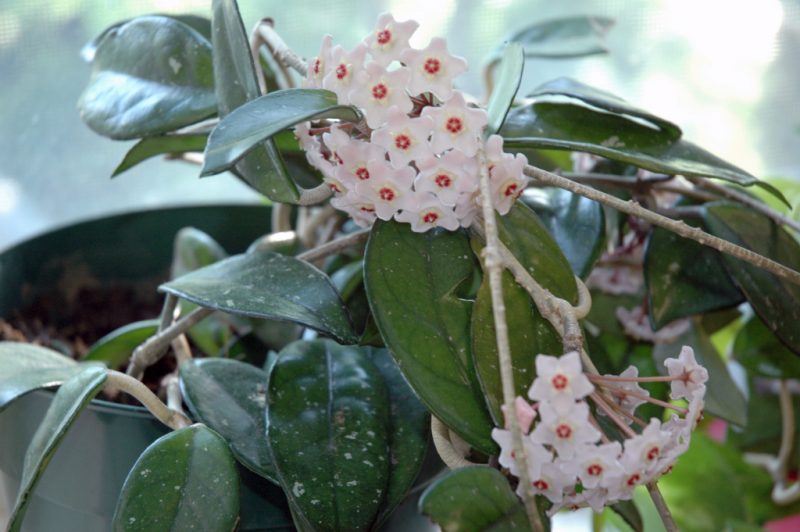
For the spectacular succulent plant Hoya carnosa, seasonal nuances of the content are of great importance:
- Lighting. Hoya karnosa needs a lot of bright light, the lack of which can cause the absence of inflorescences. It is recommended to place the pot with the plant near the southern windows, but move to the southwest in the summer season, when the midday sun is too scorching and can cause burns on the flower shoots.
- Humidity. The representative of tropical flora in natural conditions grows in a humid climate, which determines its need for higher humidity. It is recommended in the spring and summer to spray every week. With lower temperatures, it is worthwhile to limit yourself to a monthly warm shower that maintains the purity and health of the flower.
- Temperature mode. During the active growing season, the liana feels comfortable at room temperatures, varying between 22 - 25 ° C. When internal processes are slowed down, wax ivy should be lowered at a temperature of 15 - 16 ° C.
Watering Hoya Carnosa
Watering an exotic flower should be moderate after the earthen lump has dried to the depth of the phalanx of the finger. In the summer, the vines have enough weekly watering.

With the advent of winter, when the culture is kept in a room with a low temperature regime, the culture will need to be moistened only every 2 to 3 weeks. Water procedures are carried out with protected water. In this case, it is necessary to ensure that water does not remain in the pan, which can lead to the development of gray rot.
Fertilizer application
Hoya carnosa flower needs additional nutrition only in the summer period every 2 weeks. For fertilizing, liquid mineral fertilizers are used for flowering plants with a high content of phosphorus.
Landing and transplanting
The plant painfully transfers transplants, therefore, having acquired a flower, you should give it time to acclimatize, and then carefully transplant it from the shipping container into a cache-pot that is similar in diameter. A drainage layer is necessarily placed at the bottom of a constant tank. After planting, the hoya is not watered, but only sprayed. Subsequently, the transplant is carried out after 2 to 3 years, when the roots appear from the drainage holes, demonstrating that the pot has become too tight.
Pruning
The flower does not need pruning, as new inflorescences appear on the old arrow. For sanitary purposes, only damaged leaves can be removed with a sterile instrument.
Propagation Features
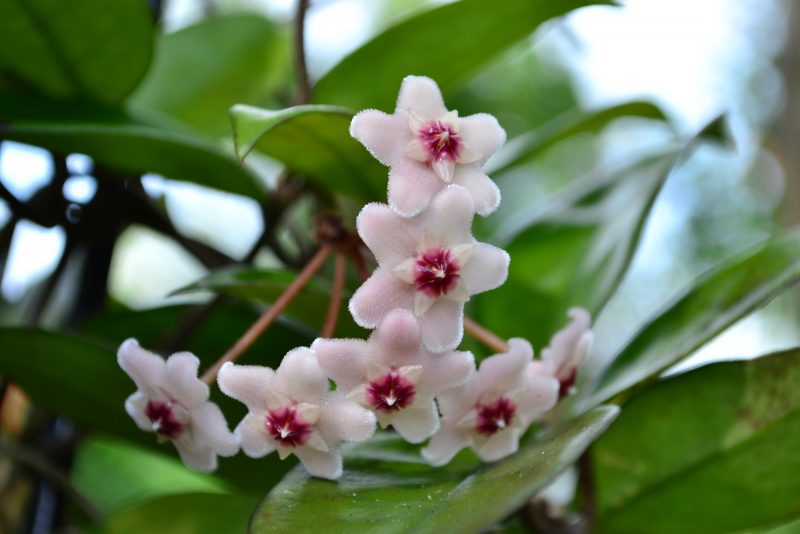
At home, hoya propagates by cuttings. The apical cuttings are cut into 10-15 cm lengths so that they have 2 internodes. Hoya is rooted in both water and a moist substrate of peat and sand. If you create a cuttings in greenhouse conditions, covering it with a plastic cap, the rooting process will accelerate.
Plant diseases and pests
Like other succulents, the liana can be attacked by whiteflies, spider mites, mealybugs and scale insects. To quickly and effectively cope with pests that have appeared, you should resort to spraying with an insecticidal preparation according to the manufacturer's instructions. After processing, the room must be aired.In spring and summer, it is recommended that the treatment with pesticides be carried out outdoors.
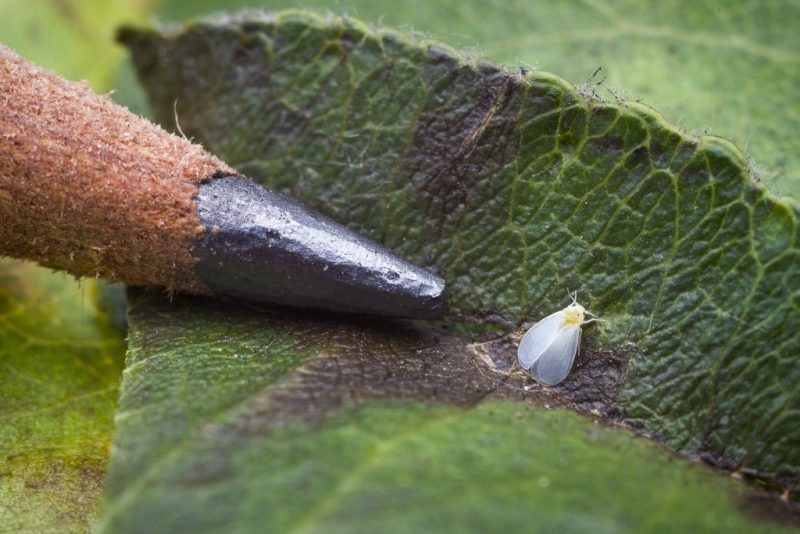
The plant is not susceptible to diseases, however, with stagnation of water in the roots or with systematic waterlogging of the soil, the development of gray rot is possible. In order to prevent the disease of elegant creeper, one should strictly observe the irrigation regime.
Why carnosa hoya does not bloom, leaves turn yellow
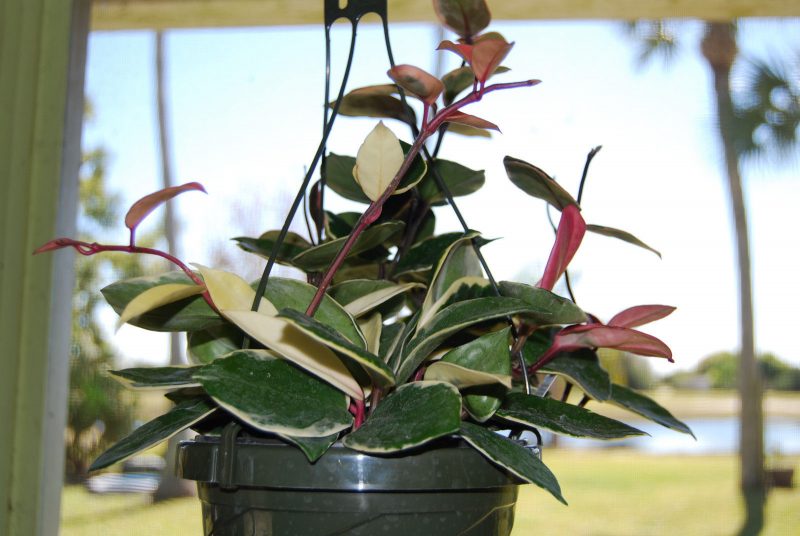
The main difficulties that flower growers may encounter when growing a fairly unpretentious flower are the following:
- Lack of colors. The main causes of the problem may be too spacious a pot or lack of moisture and lighting.
- Stunted growth. The reasons for the inhibition of development may lie in the tight capacity and high concentration of nitrogen in the substrate.
- Yellowing leaves. When the plants are populated by sucking pests, the leaves whose juice they feed on begin to turn yellow. If no harmful insects are detected, then the main cause is the overflow of an earthen coma.
Thus, carnosa hoya is a spectacular houseplant that does not require special care. Subject to simple agrotechnical requirements, the florist will decorate the house with a green miracle that cleans the air of harmful impurities.












